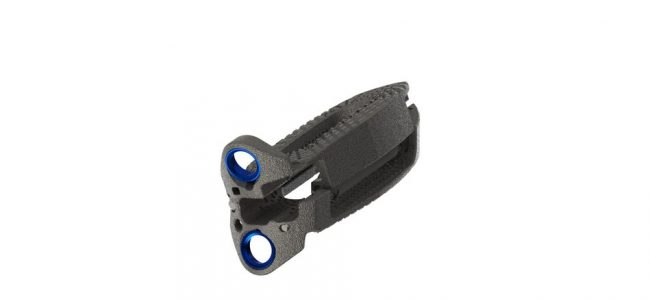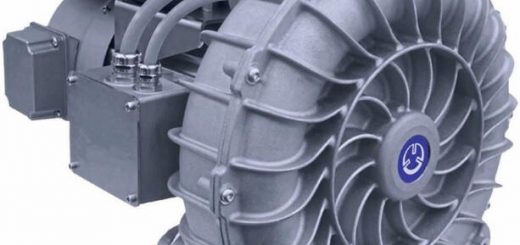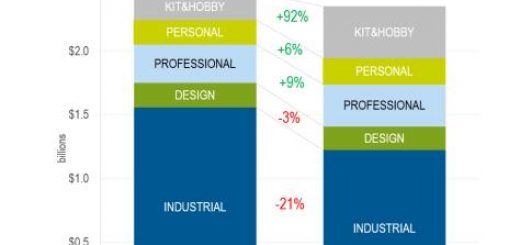Stryker Receives FDA Clearance for SAHARA® Lateral 3D Expandable Interbody System
Oct. 31, 2019,Stryker announced the U.S. Food and Drug Administration (FDA) 510(k) clearance of its SAHARA Lateral 3D Expandable Interbody System featuring Lamellar 3D Titanium Technology, which will be on display at the Society for Minimally Invasive Spine Surgery (SMISS) Annual Forum this week in Las Vegas, NV.
 Image Courtesy: Stryker
Image Courtesy: Stryker
SAHARA Lateral is the first ever 3D-printed lateral expandable fusion device and features passive expansion capabilities that are designed to allow surgeons to achieve up to 30 degrees of sagittal spinal correction in skeletally mature patients.
Utilizing a passive expansion mechanism, the implant can either be adjusted from a lateral approach intraoperatively or can adjust passively in a staged posterior approach following osteotomy.
“Surgeons performing lateral spinal fusion often require versatility to help them achieve optimal outcomes for their patients,” said Gregory Poulter, orthopaedic surgeon at OrthoIndy in Indianapolis, IN. “Stryker’s SAHARA Lateral, with its expansion mechanism that is both actively adjustable from a lateral approach and passively adjustable during a staged posterior procedure, provides an excellent 3D-printed option to help these patients.”
SAHARA Lateral features Lamellar 3D Titanium Technology, which uses an advanced 3D printing method to create structures that were previously difficult or impossible to manufacture using traditional manufacturing techniques. Starting with a titanium powder, the SAHARA implants are grown through the selective application of a high-energy laser beam, incorporating complex internal geometries and a roughened surface architecture. Roughened titanium surfaces have been shown to demonstrate increased protein expression in contrast to smooth titanium surfaces.1-3
“At Stryker, inventing state-of-the-art solutions that address unmet clinical needs is essential to our vision and purpose,” said Eric Major, President of Stryker’s Spine Division. “SAHARA Lateral, which will be on display at this year’s SMISS annual forum, provides surgeons and hospital systems with a 3D-printed solution for complex posterior correction maneuvers, all while reinforcing our commitment to excellence in medical innovation and improving quality of life for people with spinal deformities.”
SAHARA Lateral complements the SAHARA Anterior Lumbar Expandable Stabilization System, a lordotic expandable device with integrated screw fixation. SAHARA Lateral is available in a variety of footprints, heights and lordotic offerings designed to more precisely match a patient’s anatomy and is intended to be used with supplemental fixation systems cleared for use in the lumbar spine.
References:
Olivares-Navarrete R, Hyzy SL, Slosar PJ, Schneider JM, Schwartz Z, and Boyan BD. Implant materials generate different peri-implant inflammatory factors. Spine 40 (2015): 399-404.
Olivares-Navarrete R, Gittens RA, Schneider JM, Hyzy SL, Haithcock DA, Ullrich PF, Schwartz Z, and Boyan BD. Osteoblasts exhibit a more differentiated phenotype and increased bone morphogenetic protein production on titanium alloy substrates than on poly-ether-ether-ketone. The Spine Journal 12 (2012): 265-272.
Lincks J, Boyan BD, Blanchard CR, Lohmann CH, Liu Y, Cochran DL, Dean DD, and Schwartz Z. Response of MG63 osteoblast-like cells to titanium and titanium alloy is dependent on surface roughness and composition. Biomaterials 19 (1998): 2219-2232.
Source: PR News Wire/Stryker




Recent Comments